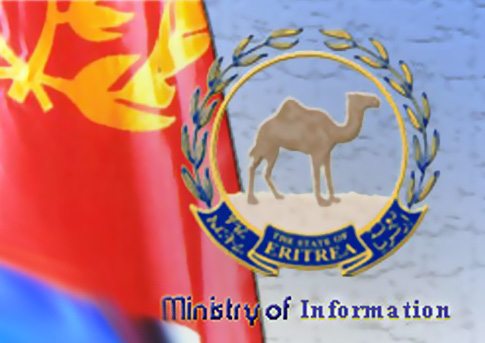After weeks of waiting White and Associates law firm filed a Class Action Lawsuit against the US State Department.
The case, named Ilya Smirnov et al. v. Hillary Rodham Clinton et al is filed in the District Court for the District of Columbia[Washington D.C.], according to the press release from the firm on Monday, June 20.
The lawsuit demands that the State Department ‘reinstate [the] commitment first made, then broken, to 22,000 would-be legal and rule-abiding immigrants to the United States.’ Though the firm still hopes for ‘for meaningful dialogue[with State Dept.] that could result in a settlement’.
Further, the press release claims that
Named plaintiffs from more than 20 countries are included in the lawsuit. Countries represented include Belgium, Bulgaria, Cameroon, Canada, Egypt, Ethiopia, France, Iran, Ireland, Italy, Japan, Morocco, Nepal, Nigeria, Russia, South Africa, Spain, Sudan, Turkey, Uganda, Uzbekistan and Yemen. Individual plaintiffs include a Harvard graduate; a former economics researcher for the University of Chicago; a management consulting entrepreneur from Ireland; an IT specialist working in Northern California; an engineer; and a medical doctor.
The Press release doesn’t indicate how many people are actually named in the lawsuit. However, earlier on Monday the law firm stated, on its blog, that 36 people from 20 countries are named in the lawsuit. Moreover, it noted:
The lawsuit is styled as a class action, meaning, if the court approves the request to certify, it will go forward as a class action, with the 22,000 victims making up the class.
It is to be recalled that the law firm stated the following, in an explanatory note the law firm released two weeks ago:
What is a class action?
We will be requesting the court to certify this case as a class action. This means that in addition to the named plaintiffs, we will be asking the court to authorize us to represent anyone among the 22,000 who wishes to be represented in this case. (No one is obliged to participate.) The idea behind a class action is to ensure that one court decides all of the issues pertinent to the case – that various courts do not expend judicial resources hearing the same issues and issuing (possibly) conflicting decisions.
Why wouldn’t the court certify the class action?
If the court found that there were not common issues of law or fact, or that the lawyer is not competent to represent the group, the court may allow the case to proceed, but not as a class action.
The law firm is handling the case in a pro bono basis – without requesting payment, though it has made appeal for donations.
Here is the recent press release from White and Associates law firm. [Check the DV 2012 Archive for previous posts]
******************
22,000 Victims of State Department Blunder File Lawsuit(link)
Los Angeles, CA, June 20, 2011
A Class Action lawsuit has been filed against the State Department in the District Court for the District of Columbia, seeking to reinstate a commitment first made, then broken, to 22,000 would-be legal and rule-abiding immigrants to the United States. The blunder, for which fault is already admitted by the State Department, saw 22,000 individuals who were proceeding down a legal route to immigrate to the United States through the Diversity Visa Program, have their applications cancelled.
The class includes named individuals living, working, and paying taxes in the United States – who are being denied the opportunity to adjust to permanent legal status. Ilya Smirnov, one of the 22,000 victims, said, “I never would have thought the U.S. Government would act in this way – first making my dream come true, then taking it away – all because of a mistake the State Department admits to making themselves.“
Named plaintiffs from more than 20 countries are included in the lawsuit. Countries represented include Belgium, Bulgaria, Cameroon, Canada, Egypt, Ethiopia, France, Iran, Ireland, Italy, Japan, Morocco, Nepal, Nigeria, Russia, South Africa, Spain, Sudan, Turkey, Uganda, Uzbekistan and Yemen. Individual plaintiffs include a Harvard graduate; a former economics researcher for the University of Chicago; a management consulting entrepreneur from Ireland; an IT specialist working in Northern California; an engineer; and a medical doctor.
Kenneth White of White and Associates is leading the litigation. Mr. White said, “The basis of this case is deep-rooted in the simple and enduring American value that ‘our word is our bond’.” He goes on to explain, “In this case our Government has let these individuals down. They have broken a public and written commitment to 22,000 friends of America. Real people have had their dreams unfairly shattered, and as a result, the public image of the United States as a fair and honorable country has been damaged around the world.”
Mr. White concludes, “This situation represents an affront to those who live up to their word, and expect their Government to do the same. It can, and must, be corrected.”
The firm White and Associates is litigating this case on a pro bono basis.
The name of the case is Ilya Smirnov et al. v. Hillary Rodham Clinton et al.
Next Steps
– White and Associates seek an early hearing for this lawsuit, filed in D.C.
– The offer for meaningful dialogue that could result in a settlement remains open
Appendix – Key Questions and Answers
1. What Visa Program is involved?
This case involves the Diversity Visa Program, whereby selected foreign nationals are able to enter a “lottery” drawing, with lucky winners making it through the slim odds of winning being entitled to apply for a U.S. visa. For those who win, strict security and background checks must still be passed before a visa will be issued. Usually, 100,000-110,000 individuals are selected from the original lottery pool to apply for visas, with a maximum of 55,000 visas available each year. This lawsuit will not increase the number of available visas.
2. What is the position of the Department of State?
The State Department is on record saying that it was “necessary” to cancel the results of the greencard lottery, as it identified a “computer glitch” that generated the results, meaning that they were not “random” as required by Congress. It has proposed to conduct a new drawing on or about July 15. It rejected the plaintiffs’ “win-win” proposal to a) permit the 22,000 to proceed with immigration applications and b) conduct a new drawing among the other entrants from around the world to fill out the applicant pool with an additional 78-100,000 selectees.
3. What is the response from White and Associates?
White and Associates strongly takes issue with the State Department’s position. The Class of 22,000 hold the view that the decision to cancel the results was the result of a kneejerk reaction rather than an objective assessment of whether the results were in fact fair and random.
4. Is there a logical argument that the results WERE actually random?
Yes. The argument supporting the fact that the results were random is clear and astoundingly simple. It is underpinned by three key points.
- Every entrant to the process was equal. No entrant had any knowledge that they could use to increase their chance of winning at the point of entry. Although certain days during the 30 day registration period turned out to be “lucky” days upon which to enter, no one knew this would be the case – and everyone had an equal chance of choosing to enter on a “lucky” day
- The State Department, although it did not manage the process well, did not apply any discrimination at the point of making the draw – for or against any race, nationality, sex, creed or any other group or individual. State Department officials are even on record stating that no “intentional act” influenced the results
- The chain of events that led to the class of 22,000 ending up as notified winners matches entirely with the dictionary definition of “random.” There is no basis, in either fact or fairness, to deny them their lawful right to proceed with their application, already-confirmed in writing by the Department of State.
5. Is any other investigation being carried out into this debacle?
Yes, the Office of the Inspector General (OIG), the U.S. State Department’s “watchdog”, has chosen to investigate the State Department’s conduct in this matter.
6. Where can one learn more about this litigation?
White & Associates maintains a blog on the ongoing litigation at www.blog.visarefusal.com. Mr. White can be reached at 818-730-3540.
*************






Comments are closed.
Leave a Comment